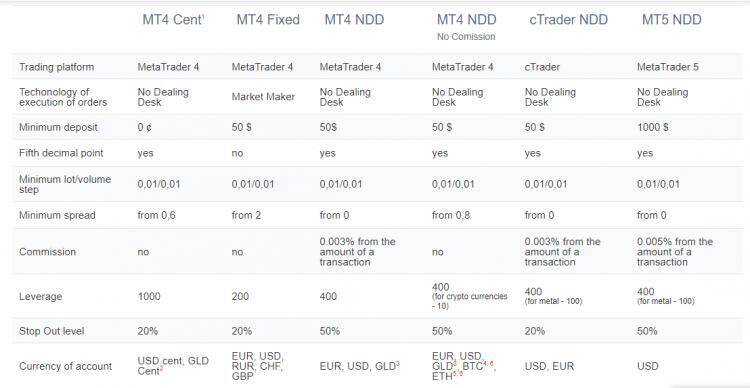
The quality, lead time, and budget of the output product depend on properly-constructed cycles. This will save the team efforts of programmers, testers, and PMs while increasing the survivability of the product in the conditions of real user operations. Next, we will cover the main phases involved in the System Development Life Cycle to review what each entails. The Agile methodology can work in harmony with the SDLC process by pairing phases with iteration frameworks.
What is 5th era of information system?
The fifth era (cloud computing) is the latest and employs networking technology to deliver applications as well as data storage independent of the configuration, location or nature of the hardware.
Each methodology has its distinctive collection of pros and cons that should be weighed down to decide which aspect or trait will yield the best results for an SDLC project. The rest of the project will not make sense if the overall scope is not properly identified. This phase is where research is put into the resources necessary, the personnel that will work on the project, the budget, and just about everything else that needs to be accomplished to determine the scope of the project. The more people working on a project, the more crucial it is to have a sense of order and structure. It promotes efficiency and productivity, as proper planning allows people to manage their expectations, find the most efficient routes, and even discover better ways to do things.
Information System and System Development Life Cycle
In most use cases, a system is an IT technology such as hardware and software. Project and program managers typically take part in SDLC, along with system and software engineers, development teams and end-users. The system development life cycle is a project management model that defines the stages involved in bringing a project from inception to completion. Software development teams, for example, deploy a variety of systems development life cycle models that include waterfall, spiral and agile processes.
Radiology Information Systems (RIS) Market is expected to witness … – Digital Journal
Radiology Information Systems (RIS) Market is expected to witness ….
Posted: Wed, 14 Jun 2023 16:45:01 GMT [source]
The system analyst is a person who is thoroughly aware of the system and guides the system development project by giving proper directions. He is an expert having technical and interpersonal skills to carry out development tasks required at each phase. Around seven or eight steps appear commonly; however, there can be anywhere from five upwards to 12. Typically, the more steps defined in an SDLC model, the more granular the stages are. Many of these models are shared with the development of software, such as waterfall or agile. Numerous model frameworks can be adapted to fit into the development of software.
Key areas of system life-cycle management:
Once complete, development managers will prepare a design document to be referenced throughout the next phases of the SDLC. Furthermore, developers will often create a software requirement specification or SRS document. The analysis stage includes gathering all the specific details required for a new system as well as determining the first ideas for prototypes. A platform for developing cloud-native applications that automate business decisions and processes. The following diagram shows the complete life cycle of the system during analysis and design phase.

Other more elaborate versions of the SDLC specify many subphases of these three phases. As one of the industry’s leading providers of application security testing solutions, Veracode offers a cloud-based subscription service that makes it easy for developers to embed security into all stages of the system development life cycle. With Veracode, developers can find and fix flaws at the most cost-efficient point in the development process and produce more secure software with every release. In general, SDLC in information systems is defined by a model and described in the form of a methodology. The life cycle model or paradigm defines the overall organization and, as a rule, its main phases and principles of transition between them.
Life Cycle of System Analysis and Design
For example, as the system analyst of Viti Bank, you have been tasked to examine the current information system. Customers in remote rural areas are finding difficulty to access the bank services. It takes them days or even weeks to travel to a location to access the bank services. With the vision of meeting the customers’ needs, the bank has requested your services to examine the current system and to come up with solutions or recommendations of how the current system can be provided to meet its needs.
- Application lifecycle management (ALM) is the people, tools, and processes that manage the life cycle of an application from conception to end of life.
- Larger environments contain a greater number of systems, complicating system status and event tracking across your organization.
- At this step, desired features and operations are detailed, including screen layouts, business rules, process diagrams, pseudocode, and other deliverables.
- [Outcome 5] Traceability between system requirements and elements of the system architectural design are developed.
- Each loop within the spiral is called a phase and they can be defined based on the needs of the project managers in terms of risks.
In the seventh and final phase, end users can fine-tune the completed system as necessary if they want to improve performance. Through maintenance efforts, the team can add new capabilities and features and meet new requirements set by the client. The second SDLC phase is where teams will work on the root of their problem or need for a change. In case there’s a problem to solve, possible solutions are submitted and analyzed to figure out the best fit for the project’s ultimate goal or goals. It’s where teams consider the functional requirements of the solution.
V model
Similarly, the documents called for in the guidance and shown in Appendix C
should be tailored based on the scope of the effort and the needs of the decision
authorities. Time and again, it’s been proven that projects not only benefit but thrive by following a standardized set of steps to achieve a final result. Cue the Software Development Life Cycle which allows the team to work on manageable phases until the project is released. By doing so, teams establish a systematic fashion to go about creating new solutions to existing problems in a controlled and standardized manner. Ideally, System Analysts are highly skilled and knowledgeable in multiple operating systems, hardware configurations, programming languages, and software and hardware platforms. They are usually involved from the beginning stages of a project and up until the post-evaluation review of the solution.
- Develop System Architectural DesignDevelop and document a system architectural design which specifies all elements of the system with regards to all the functional and non-functional system requirements.
- The V-model (which is short for verification and validation) is quite similar to the waterfall model.
- Security is critical when the intent of the system development life cycle is to produce software applications.
- This might require documenting the risk information needed to address the trust requirements in contracts, service level agreements (SLAs), or other forms of legal agreements.
This is a feasibility study or preliminary plan for the company to acquire any resources necessary to improve a service or build on specific infrastructure. The process follows the steps i.e. first creates logical design and gets design confirmation by top management or decision-makers of the company. During the designing process, https://traderoom.info/6-strategies-to-find-a-cheap-programmer-for-your/ if any changes required, analysts redesign it. The changes are easily done because the logical design reflects on papers. So, it is good to make the required changes on papers rather than the physical system. Changes in the physical system always make losses to the company in terms of wastage of time, resources, money, etc.
Once they confirm the logical design then the analyst looks after on its physical design. Besides SDLC, there is another concept that is a cornerstone for the entire lifecycle of product and system planning. Systems Analysis & Design (SAD) is a process during which specific information systems are developed that effectively support hardware, software, or people.
What are the six systems life cycle?
There are usually six stages in this cycle: requirement analysis, design, development and testing, implementation, documentation, and evaluation.
What are the 4 phases of information system development?
All information systems projects have to go through the four phases of planning, analysis, design, and implementation. These phases are part of the system development life cycle (SDLC).

